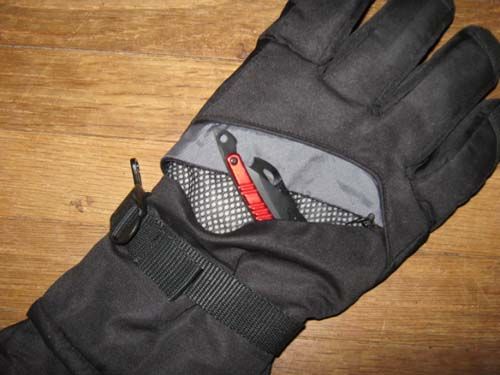Article updated on November 28, 2017.
In the world of contraband control, what we see is not necessarily the complete story. Like viewing the tip of an iceberg, there is something frequently underneath the surface. This is true of any concealment trick, including how smugglers hide illicit items in seemingly innocent articles of clothing.
Consider stories where clothing is used as contraband vessels. One popular tale tells of how an outside party sends clothing into a facility with bootleg sewn into a garment. In cooler locations, the puffy coat is a popular choice for contrabandists. Using the philosopy of the padding as a dissuading factor, smugglers attempt movement of bootleg through jackets with ample stuffing. The well-stuffed coat requires a careful search and may get a less-than-thorough pat down due to volume or time contraints.
Zippers are not a new thing, gaining popularity around 100 years ago. Not all are made of metal, making their discovery by metal detectors much more difficult. They come in many shapes and sizes. Of course, just because there is a zipper does not mean that there will be contraband.
This is increased when there small pocket and a hidden zipper. Some zippers are quite small and covered by an unobtrusive flap of fabric.
This looks like an ordinary glove, unadorned and designed to simply keep a hand warm. On the surface, there is nothing sinister about this glove.

The same glove is equipped with a hard to detect mini-zipper. The zipper head is concealed by a neatly constructed fabric over the seam. It is rather easy to miss when one gives a cursory glance. For the everyday consumer, it is handy for keys or change. For the smuggler, it is a useful place to store small weapons, tradeables, or even a communication device. Note how a small folding knife can be easily concealed within.
Remember not to depend exclusively on metal detectors. Not all knives are necessarily made of metal.
Note the collar of this coat. It appears to be rather plain and with no other function than to encircle the neck of the wearer. However, this was designed somewhat like a convertible top for an automobile. A light hood is attached to the collar and can be rolled up and tucked of sight when the wearer chooses. It is conveniently held in place by a flap of fabric in the collar and Velcro. If you look carefully at the center of the image above, you can see a part of the strip of Velcro.
Velcro is a relative new comer to the word of clothing. Created around World War II, it was not available until around the late 1950s. Even so, it took time to gain popularity. And it has become a staple of concealment for some smugglers.
It works like a zipper by holding two pieces of a garment together. Imagine how easy it is to conceal any small item in this collar area. What if a would-be smuggler used the rolled hood as padding to further hide an illicit item?
It is true that the astounding volume of winter wear items makes a thorough search challenging; awareness of some of the tricks makes the search a bit easier.















